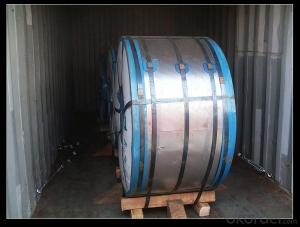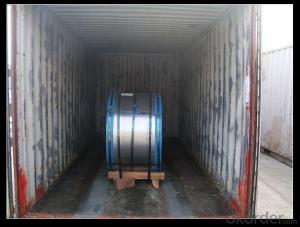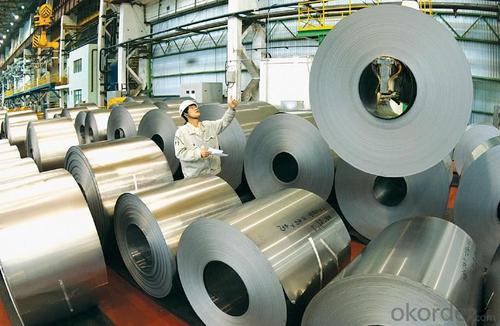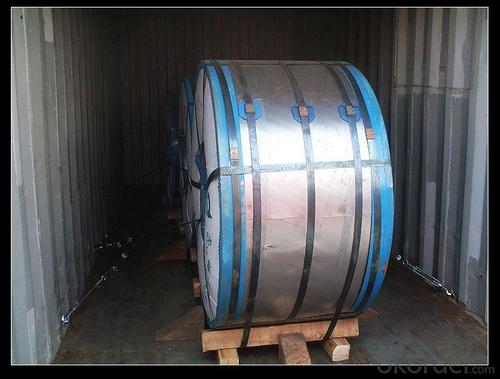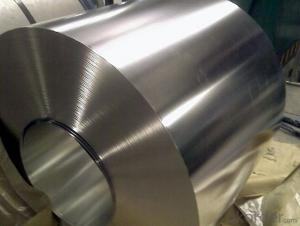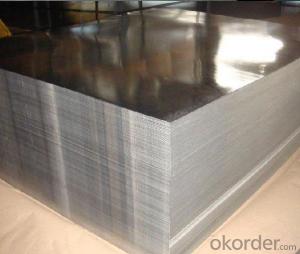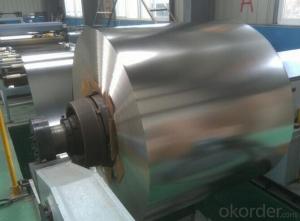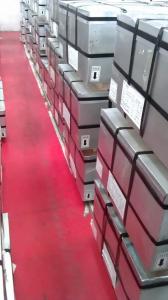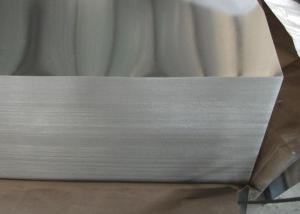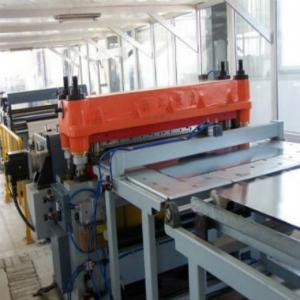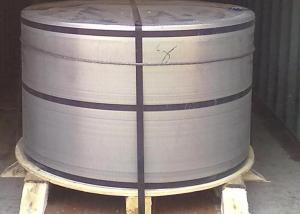Electrolytic Tinplate in Coils for Foods and Chemical Cans Packing
- Loading Port:
- Tianjin
- Payment Terms:
- TT OR LC
- Min Order Qty:
- 25 m.t
- Supply Capability:
- 7000 m.t/month
OKorder Service Pledge
OKorder Financial Service
You Might Also Like
1.Structure of Electrolytic Tinplate in Coils for Foods and Chemical Cans Packing Description
Electrolytic Tin Plate Coils and Sheets for Foods Metal Packaging, is one thin steel sheet with a coating of tin applied by electrolytic deposition. Tinplate made by this process is essentially a sandwich in which the central core is strip steel. This core is cleaned in a pickling solution and then fed through tanks containing electrolyte, where tin is deposited on both sides. As the strip passes between high-frequency electric induction coils, it is heated so that the tin coating melts and flows to form a lustrous coat.
2.Main Features of the Electrolytic Tinplate in Coils for Foods and Chemical Cans Packing
Appearance – Electrolytic Tin Plate is characterized by its beautiful metallic luster. Products with various kinds of surface roughness are produced by selecting the surface finish of the substrate steel sheet.
Paintability and printability – Electrolytic Tin Plates have excellent paintability and printability. Printing is beautifully finished using various lacquers and inks.
Formability and strength – Electrolytic Tin Plates have got very good formability and strength. By selecting a proper temper grade, appropriate formability is obtained for different applications as well as the required strength after forming.
Corrosion resistance – Tinplate has got good corrosion resistance. By selecting a proper coating weight, appropriate corrosion resistance is obtained against container contents. Coated items should meet 24 hour 5 % salt spray requirement.
Solderability and weldability – Electrolytic Tin Plates can be joined both by soldering or welding. These properties of tinplate are used for making various types of cans.
Hygienic – Tin coating provides good and non toxic barrier properties to protect food products from impurities, bacteria, moisture, light and odours.
Safe – Tinplate being low weight and high strength makes food cans easy to ship and transport.
Eco friendly – Tinplate offers 100 % recyclability.
Tin is not good for low temperature applications since it changes structure and loses adhesion when exposed to temperatures below – 40 deg C.
3.Electrolytic Tinplate in Coils for Foods and Chemical Cans Packing Images
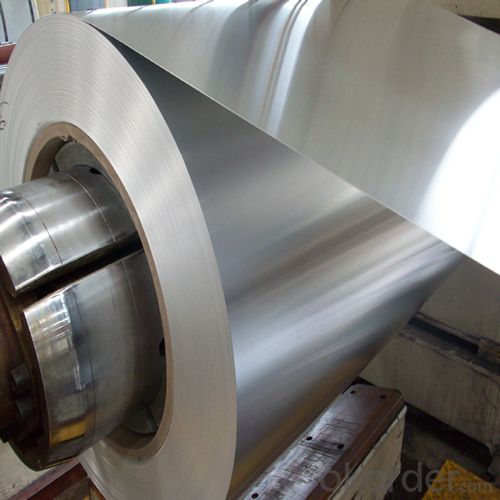
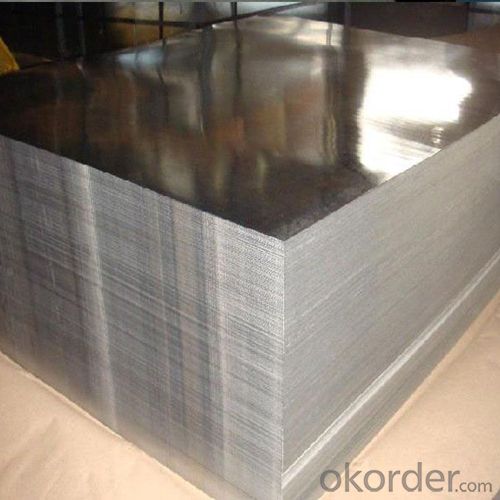
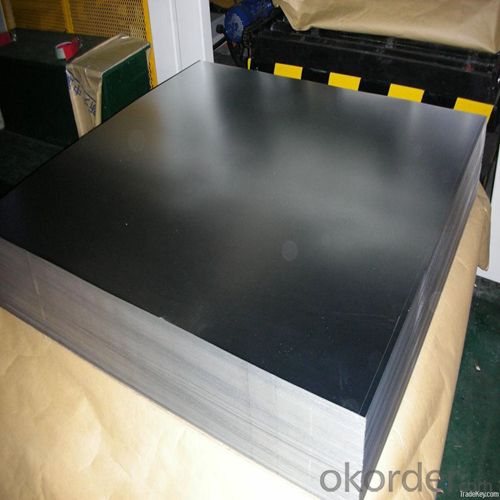
4.Electrolytic Tinplate in Coils for Foods and Chemical Cans Packing Specification
Standard | ISO 11949 -1995, GB/T2520-2000,JIS G3303,ASTM A623, BS EN 10202
|
Material | MR,SPCC |
Thickness | 0.15mm - 0.50mm |
Width | 600mm -1150mm |
Temper | T1-T5 |
Annealing | BA & CA |
Coil Inner Diameter | 508mm |
Weight | 6-10 tons/coil 1~1.7 tons/sheets bundle |
Passivation | 311 |
Oil | DOS |
Surface | Finish,bright,stone,matte,silver |
5.FAQ of Electrolytic Tinplate in Coils for Foods and Chemical Cans Packing
- How are the Electrolytic Tin Plates specified?
The Electrolytic Tin Plates are specified as per the steel base, extent of tempering, the coating weight, annealing method and the surface finish.
- How many types there are for base steels?
The base steels are of three types: Type MR, L, D
- Q: How does tinplate contribute to the overall protection of packaged products?
- Tinplate contributes to the overall protection of packaged products by providing a durable and corrosion-resistant material that helps to prevent contamination, spoilage, and damage during storage and transportation. Its robustness acts as a barrier against external factors such as moisture, oxygen, light, and microorganisms, safeguarding the quality and integrity of the packaged items. Additionally, tinplate's ability to maintain a consistent temperature helps to preserve the freshness and taste of perishable goods, making it an ideal choice for protecting packaged products.
- Q: What are the different coating options for tinplate?
- Some of the different coating options for tinplate include tin-free steel (TFS), electrolytic tinplate (ETP), and tin coating with different grades or thicknesses.
- Q: How does tinplate packaging contribute to product protection against contamination?
- Tinplate packaging contributes to product protection against contamination by providing a durable and secure barrier between the product and external elements. The tin coating on the steel substrate prevents corrosion and rusting, ensuring the integrity of the packaging. This protects the product from moisture, oxygen, and other contaminants that could compromise its quality or safety. Additionally, tinplate packaging is airtight, preventing the entry of bacteria or microorganisms, further enhancing product protection against contamination.
- Q: What are the main factors affecting tinplate coil cutting and slitting?
- The main factors affecting tinplate coil cutting and slitting are the thickness and quality of the tinplate, the sharpness and alignment of the cutting blades, the tension and speed of the slitting process, and the skill and expertise of the operators. Other factors such as the condition of the slitting machine, the presence of any defects or irregularities in the tinplate, and the desired width and accuracy of the final cuts also play a role in the process.
- Q: How does the tin coating affect the appearance of tinplate?
- The tin coating enhances the appearance of tinplate by giving it a shiny and reflective surface. It adds a lustrous touch to the metal, making it more visually appealing and attractive.
- Q: How does tinplate contribute to the protection of musical instruments?
- Tinplate is commonly used in the manufacturing of musical instrument cases and containers due to its durability, corrosion resistance, and ability to provide a protective barrier. It helps safeguard musical instruments from external factors such as moisture, dust, and impacts, ensuring their longevity and preserving their sound quality.
- Q: Can tinplate be used for industrial containers?
- Yes, tinplate can be used for industrial containers. Tinplate is a type of steel coated with a thin layer of tin, which provides excellent corrosion resistance and is commonly used in the manufacturing of cans and containers for various industrial applications.
- Q: How does tinplate contribute to the overall sustainability of the supply chain?
- Tinplate contributes to the overall sustainability of the supply chain by offering several environmental benefits. Firstly, tinplate is highly recyclable, allowing for the continuous reuse of the material without any loss of quality. This reduces the need for virgin materials and minimizes waste generation. Secondly, tinplate provides excellent protection and preservation properties, extending the shelf life of products and reducing food waste. Additionally, tinplate is lightweight, which helps in optimizing transportation efficiency, reducing fuel consumption, and lowering carbon emissions. Overall, tinplate's recyclability, protective qualities, and lightweight nature make it a sustainable choice that positively impacts the entire supply chain.
- Q: What are the factors that affect the cost of tinplate?
- The factors that affect the cost of tinplate include the price of raw materials such as tin and steel, market demand and supply dynamics, production and manufacturing costs, transportation and logistics expenses, currency exchange rates, and any government regulations or tariffs that may impact trade.
- Q: Can tinplate be used for agricultural applications?
- Yes, tinplate can be used for agricultural applications. It is commonly used for the packaging of agricultural products such as canned food, seeds, and agricultural chemicals. Tinplate offers protection against moisture, pests, and contamination, making it suitable for preserving and transporting agricultural goods. Additionally, its durability and resistance to corrosion make it a reliable choice for various agricultural uses.
Send your message to us
Electrolytic Tinplate in Coils for Foods and Chemical Cans Packing
- Loading Port:
- Tianjin
- Payment Terms:
- TT OR LC
- Min Order Qty:
- 25 m.t
- Supply Capability:
- 7000 m.t/month
OKorder Service Pledge
OKorder Financial Service
Similar products
Hot products
Hot Searches
Related keywords

